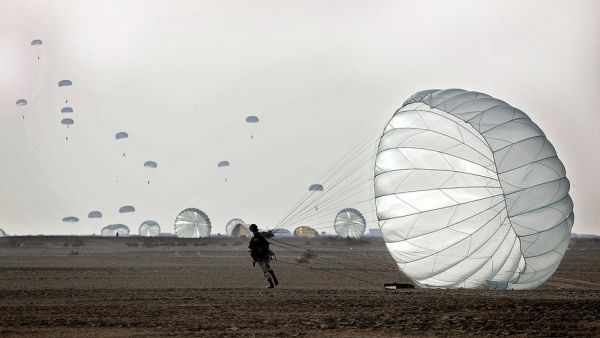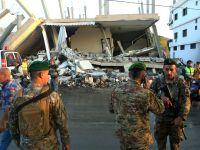Iran's military has kicked off a ground forces drill along the coast of the Gulf of Oman, the latest in a series of snap exercises amid escalating tensions over the country's nuclear programme and Washington's pressure campaign against Tehran.
State TV reported that commando units and airborne infantry were participating in the annual exercise, along with fighter jets, helicopters and military transport aircraft.
The drill, overseen by Iran's National Army chief Sayeed Abdelrahim Mousavi, comes four days after the Iranian Revolutionary Guard Corps (IRGC) carried out ballistic missile drills in a central desert region and just one day before the inauguration of US president-elect Joe Biden.
Biden is expected to take a less hawkish approach towards Iran and has pledged to rejoin a landmark 2015 nuclear deal between Iran and world powers.
The deal was signed under President Barack Obama but his successor, President Donald Trump, withdrew the US from the treaty in 2018, reimposing sanctions on Iran and pursuing a 'maximum pressure' policy towards the country.
In response, Iran has gradually abandoned the limits the deal set on its nuclear development.
On Saturday, the IRGC launched anti-warship ballistic missiles at a simulated target at a distance of some 1,800 kilometres (1,120miles) in the Indian Ocean, a day after the Guard's aerospace division launched surface-to-surface ballistic missiles and drones against 'hypothetical enemy bases'.
The drill on Friday was notable for the presence of wedge-shaped suicide drones that strongly resemble the craft used to attack a Saudi oil facility in 2019. The attack was blamed on Iran, which has always denied any involvement.
Analysts say the IRGC drills are often used as a show of strength and as a deterrent to Iran's regional and international enemies.
On Saturday, the IRGC launched anti-warship ballistic missiles at a simulated target at a distance of some 1,800 kilometres (1,120miles) in the Indian Ocean, a day after the Guard's aerospace division launched surface-to-surface ballistic missiles and drones against 'hypothetical enemy bases'.
The drill on Friday was notable for the presence of wedge-shaped suicide drones that strongly resemble the craft used to attack a Saudi oil facility in 2019. The attack was blamed on Iran, which has always denied any involvement.
Analysts say the IRGC drills are often used as a show of strength and as a deterrent to Iran's regional and international enemies.
Last Thursday, the Islamic republic's navy fired cruise missiles as part of a drill in the Gulf of Oman, under the surveillance of what appeared to be a US nuclear submarine.
While earlier that week, the Guard's affiliated forces carried out a limited military manoeuvre in the Persian Gulf.
This followed a massive, drones-only drill across half of the country earlier in January.
Tensions between Washington and Tehran remain high in the final days of the Trump administration as the fate of the nuclear deal hangs in the balance.
Iran has begun enriching uranium closer to weapons-grade levels and on January 4 seized a tanker from South Korean - an important US ally in Asia.
For its part, the US sent B-52 bombers, the USS Nimitz aircraft and a nuclear submarine into the region.
This article has been adapted from its original source.








